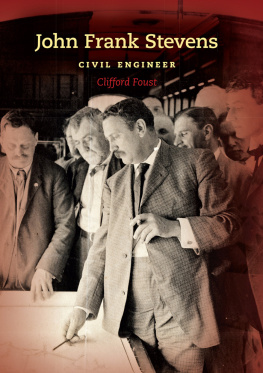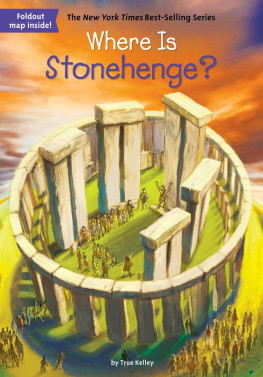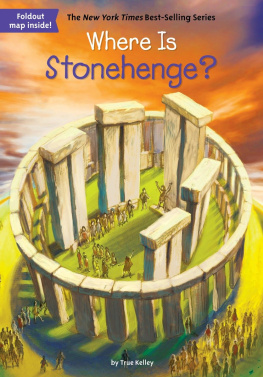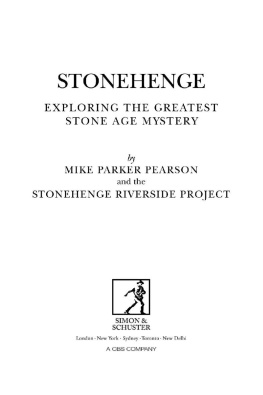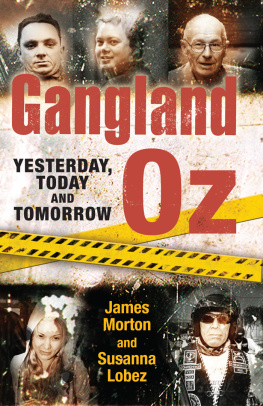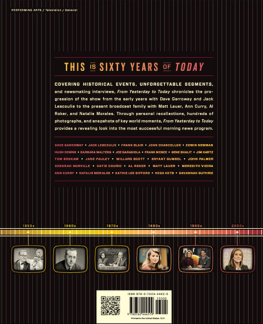FRANK STEVENS
Curator of the Salisbury Museum
with Plans and Illustrations by
HEYWOOD SUMNER. F.S.A.
decoration
LONDON:
Sampson Low, Marston & Co. Ltd
Price 1s net
1916.
FOREWORD
The interest that has always attached itself to Stonehenge has, without doubt, been in a great measure due to the mystery as to the origin of this unique monument of bygone time. But the careful investigations carried out by the modern school of archologists, as instanced in the work of General Pitt Rivers, Mr. Gowland, and others, every excavation being carried out with great care and scientific accuracy, have had good results; little by little the history of Stonehenge has been unravelled; a fact that Mr. Stevens has clearly demonstrated in the present volume. We now know how, when, and who, built this remarkable temple. One point, however, still remains a mystery, viz. whence the so-called foreign stones were obtained? Clearly, as geology shows, from no spot in Wiltshire.
Amongst the many rude stone circles scattered over Great Britain, Stonehenge is unique, in the fact of having its sarsen stones carefully though roughly worked; and also in the introduction of the horseshoe within the circles, in the design or plan of the building. As in the present day, our churches, in their design, symbolise the Cross, so we may fairly infer that the horseshoe at Stonehenge had its own special meaning, as it still has in the East.
I would advise all interested in the subject, after reading Mr. Stevens' lucid and comprehensive account, to visit this weird monument and judge for themselves; take Omar's sound advice, "To-day" view the "Dead Yesterday," wait not for the "Unborn To-morrow."
H.P. BLACKMORE.
Salisbury .
March 1, 1916.
CONTENTS
| PAGE |
| v |
| 1 |
| 8 |
| 12 |
| 15 |
| 1. | 17 |
| 2. | 20 |
| 27 |
| 1. | 28 |
| 2. | 29 |
| 3. | 31 |
| 4. | 34 |
| 36 |
| 1. | 40 |
| 2. | 42 |
| 3. | 45 |
| 4. | 49 |
| 51 |
| 57 |
| 67 |
| 70 |
| 1. | 73 |
| 2. | 87 |
| 92 |
Stonehenge, TodayLooking West.
STONEHENGE: TO-DAY AND YESTERDAY
STONEHENGE SUMMARISED
USEFUL FACTS, FOR THE ATTENTION OF VISITORS
Each statement is furnished with a reference to the particular pages in this book, where fuller information and arguments "for and against" may be found.
I. When and by whom Stonehenge was built
(a) Stonehenge was erected about the year 1700 B.C. (See page 51.)
(b) It was built by a race or men who had )
II. Stonehenge consists of
(a) A circular earthwork, 300 feet in diameter. ()
(b) An avenue bounded by earthworks approaching it on the north-east. ()
(c) One large unworked Sarsen Stone, called the "Hele Stone," or "Friar's Heel." ()
(d) A recumbent slab within the earthwork called the "Slaughtering Stone." ()
(e) Two small unhewn Sarsens lying north-west and south-east of the Circle of Stones. ()
(f) A ring of hewn Sarsen stones with "imposts" or lintels mortised to them. The lintels are fitted together with toggle joints. Sixteen out of the original thirty uprights of these "Trilithons" are now standing.
The diameter of this circle is about 108 feet, or that of the dome of St. Paul's. ()
(g) A ring of less perfectly hewn "Foreign Stones" (i.e. stones not to be found in Wiltshire at the present day).
These numbered between thirty and forty. Only seven are standing to-day, nine are overthrown. ()
(h) Five great Trilithons, arranged in a horseshoe, with the opening to the north-east. These Trilithons rise gradually in height towards the south-west. The largest group of stones fell A.D. 1620. Those next to the great Trilithon on the north-west, fell on January 3rd, 1797.
To-day only two of the Inner Trilithons are standing. One upright of the great Trilithon (raised and made secure in 1901) is erect. ()
(i) A horseshoe of less perfectly hewn Foreign Stones. Originally there were fifteen or more of these monoliths averaging eight feet high. ()
(j) A simple recumbent slab of micaceous sandstone called the "Altar Stone." ()
III. Where the Stones came from
(a) The Sarsen Stones are the remains of a cap of Tertiary Sandstone which once covered the plain. ()
(b) The Foreign Stones are still a matter of debate. They have assuredly been brought from a distance. This is unusual; megalithic structures are usually built of materials found close at hand. ()
Stonehenge. Looking towards the South East.
IV. How the Monument was Erected
The large monoliths of Sarsen Stone were first of all roughly shaped as they lay in situ on the Plain and then transported to the chosen site.
The Foreign Stones were also dressed on the spot before erection.
The entire work was performed with stone tools of the roughest description, weighing from half a pound to over sixty pounds. ()
The only trace of metal discovered in 1901, was a small stain of bronze on one stone, caused by contact with the stone of some very small bronze object, possibly an ornament. ()
The large Trilithons were erected from the centre of the site.
The Foreign Stones were placed in position afterwards. ()
V. Stonehenge and the Summer Solstice
It is a notable fact that the sun rises immediately over the summit of the "Hele Stone," in a line with the axis of Stonehenge on the Summer Solstice.
Sir Norman Lockyer and Mr. Penrose, working on astronomical grounds, fix the date of the circle at 1680 B.C. , with a possible error of 200 years on either side.
Much has been said as regards Sun Worship )
VI. Stone Circles generally, and Stonehenge
1. Stonehenge is probably the latest, and is certainly the most elaborate, stone circle in England.
2. It is the only one in which the stones are squared, dressed, and provided with lintels or imposts.
3. It is the only circle which contains a "horseshoe" arrangement of stones.
4. Most of the stone circles in the South of England face towards the north-east. Stonehenge is one of these.
5. Monuments of the Stonehenge type, but ruder, are found in the following neighbouring counties in South Britain: Cornwall, Devonshire, Dorset, Somerset, Wiltshire.



